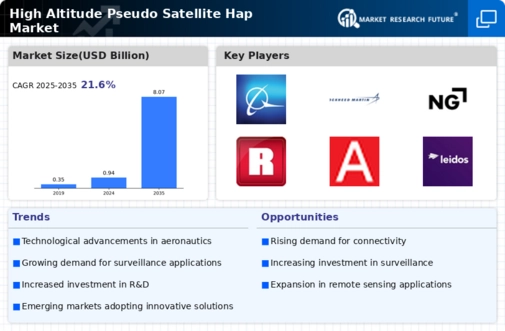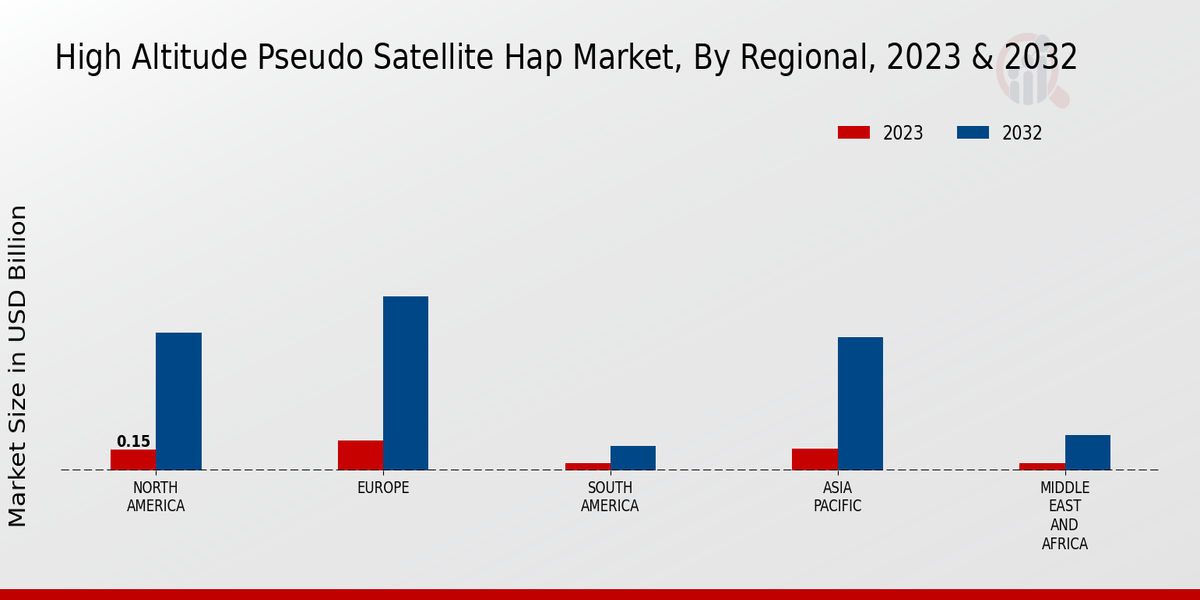Market Growth Projections
The Global High Altitude Pseudo Satellite Hap Market Industry is projected to experience substantial growth over the next decade. With a market value of 0.94 USD Billion in 2024, it is anticipated to reach 8.07 USD Billion by 2035. This growth trajectory indicates a robust compound annual growth rate of 21.59% from 2025 to 2035. Such projections reflect the increasing recognition of high altitude pseudo-satellites as a viable alternative to traditional satellite systems, driven by advancements in technology, expanding applications, and supportive government policies.
Advancements in Technology
Technological advancements play a crucial role in the growth of the Global High Altitude Pseudo Satellite Hap Market Industry. Innovations in materials, propulsion systems, and payload capabilities are enhancing the performance and efficiency of these platforms. For instance, the development of lightweight materials allows for longer flight durations and improved operational capabilities. Additionally, advancements in solar energy utilization enable these pseudo-satellites to operate sustainably at high altitudes. As technology continues to evolve, it is likely that the market will see increased adoption and investment, further propelling its growth.
Government Initiatives and Funding
Government initiatives and funding are pivotal in shaping the Global High Altitude Pseudo Satellite Hap Market Industry. Various governments are recognizing the strategic importance of high altitude pseudo-satellites for national security, disaster management, and communication. For example, several countries are investing in research and development programs to explore the potential of these platforms. Such initiatives not only provide financial support but also create a favorable regulatory environment that encourages innovation and collaboration among industry stakeholders. This support is expected to stimulate market growth and attract new players to the sector.
Increasing Demand for Connectivity
The Global High Altitude Pseudo Satellite Hap Market Industry is experiencing a surge in demand for enhanced connectivity solutions. As urbanization and digitalization continue to rise globally, there is an increasing need for reliable communication networks, especially in remote areas. High altitude pseudo-satellites offer a unique solution by providing broadband connectivity without the need for extensive ground infrastructure. This demand is projected to drive the market from 0.94 USD Billion in 2024 to an estimated 8.07 USD Billion by 2035, reflecting a compound annual growth rate of 21.59% from 2025 to 2035.
Environmental Monitoring and Disaster Management
The Global High Altitude Pseudo Satellite Hap Market Industry is also being driven by the need for environmental monitoring and disaster management solutions. High altitude pseudo-satellites can provide real-time data on climate change, natural disasters, and environmental degradation. Their ability to operate at high altitudes allows for extensive coverage and detailed monitoring of ecological changes. Governments and organizations are increasingly leveraging these capabilities to enhance disaster response strategies and improve environmental management practices. This trend is likely to contribute to the market's growth as stakeholders seek innovative solutions to address pressing global challenges.
Growing Applications in Defense and Surveillance
The Global High Altitude Pseudo Satellite Hap Market Industry is witnessing growing applications in defense and surveillance sectors. These platforms offer unique advantages, such as persistent surveillance capabilities and the ability to cover vast areas without the limitations of traditional satellites. Military organizations are increasingly adopting high altitude pseudo-satellites for reconnaissance, intelligence gathering, and border security. The versatility of these systems makes them attractive for various defense applications, potentially leading to increased investments and partnerships within the industry, thereby driving market expansion.























